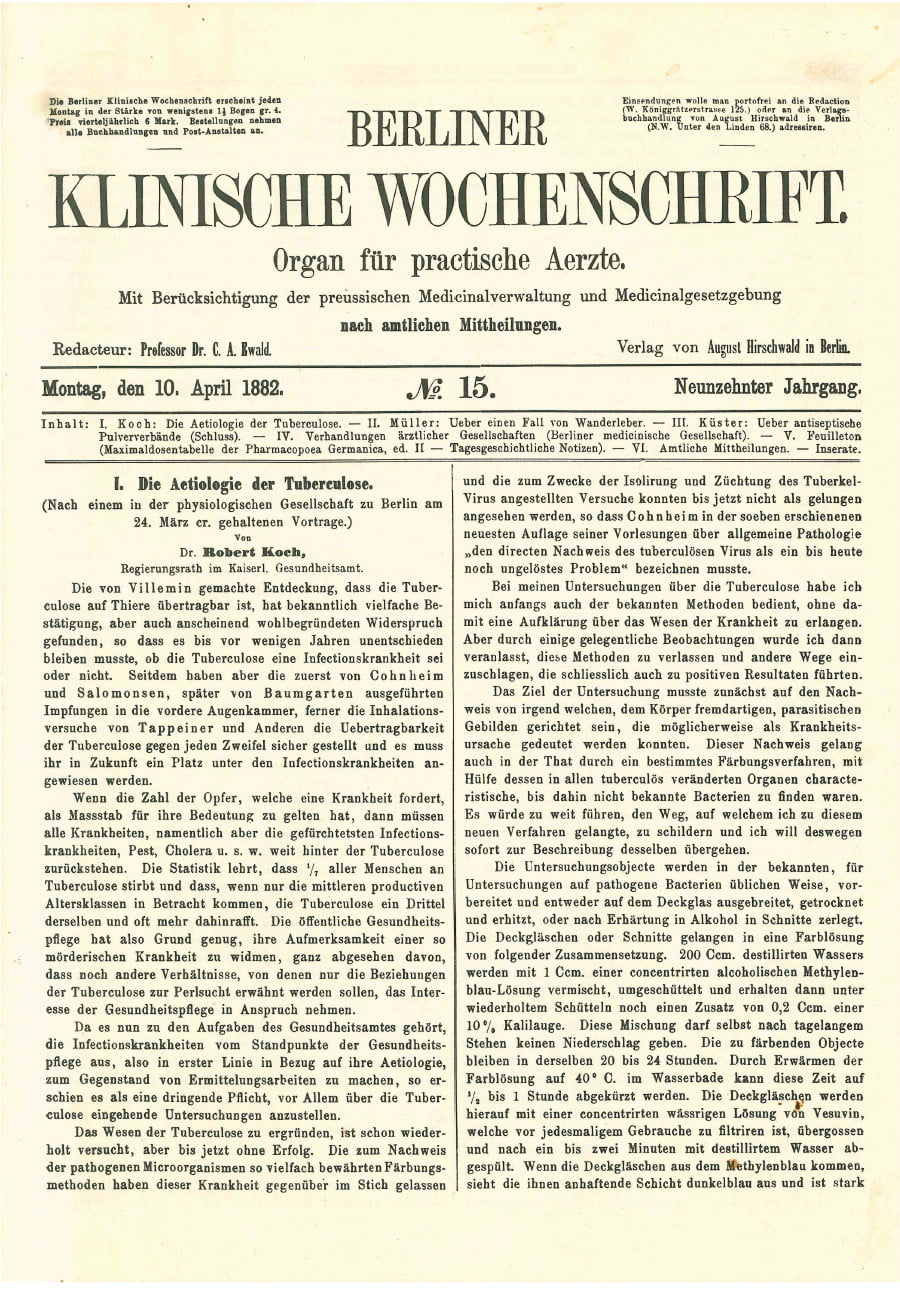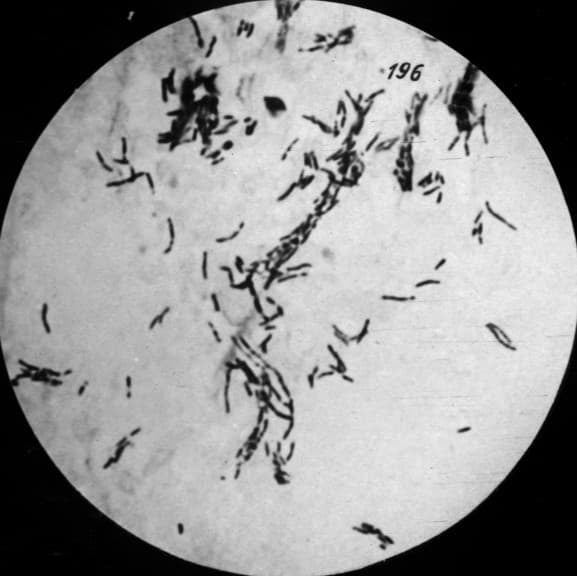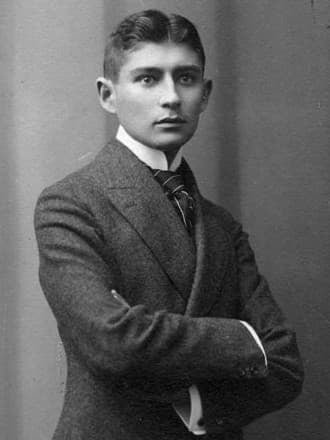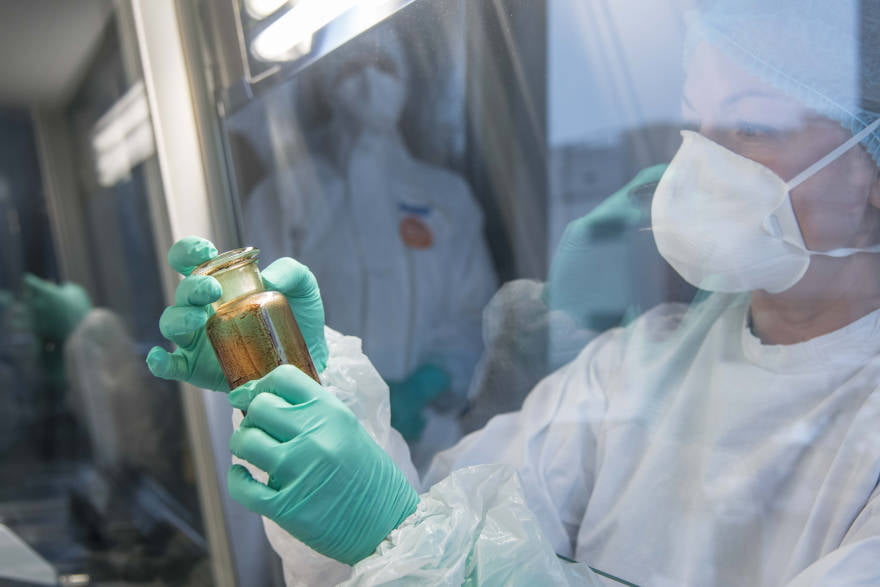 Loading...
Loading...
 Loading...
Loading...

In the reading room of the Physiological Institute in Berlin, Robert Koch announced the discovery of the tuberculosis pathogen. The day on which the 38-year-old once gave his famous lecture is celebrated every year as World Tuberculosis Day.


Using special staining techniques, new culture media and culture conditions, he succeeded in making the tubercle bacilli (Mycobacterium tuberculosis) visible. Koch achieved world fame with this discovery. He was also awarded the Nobel Prize for Medicine in 1905.







In the course of the 19th century, tuberculosis had developed into a widespread disease. Around one seventh of the population in the German Empire died of the so-called white plague at that time. Many famous personalities, among others from politics, art and culture, also fell victim to it.






Koch raised hopes of finally understanding the transmission mechanisms of the disease and thus being able to cure it. However, he did not succeed in finding a vaccine against tuberculosis.
The first effective drug against tuberculosis was not developed until the middle of the 20th century: The antibiotic streptomycin. Tuberculin is still used today, along with newer methods, to diagnose a tuberculosis infection.



Unfortunately, tuberculosis is still one of the most common infectious diseases worldwide. According to the WHO, about 10 million people contract tuberculosis every year and about 1.5 million people die every year as a result of this disease, often due to inadequate diagnosis and treatment. About 85% of all new cases live in Africa, Southeast Asia and the Western Pacific region.
The rapid detection of infected persons, the isolation of infectious patients and a rapid and efficient therapy are crucial for effective tuberculosis control. WHO's goal is to reduce TB incidence globally by 90% and TB deaths by 95% by 2035 compared to 2015.











Even though only a comparatively small proportion of tuberculosis cases occur in Europe, this infectious disease is of great importance for public health. This is mainly due to the sometimes high rates of drug-resistant tuberculosis.
In Germany, tuberculosis has become a rare disease. In 2020, 3,896 cases of tuberculosis were registered, corresponding to just under 5 patients per 100,000 inhabitants. However, this means that doctors often no longer think of tuberculosis when making a diagnosis.